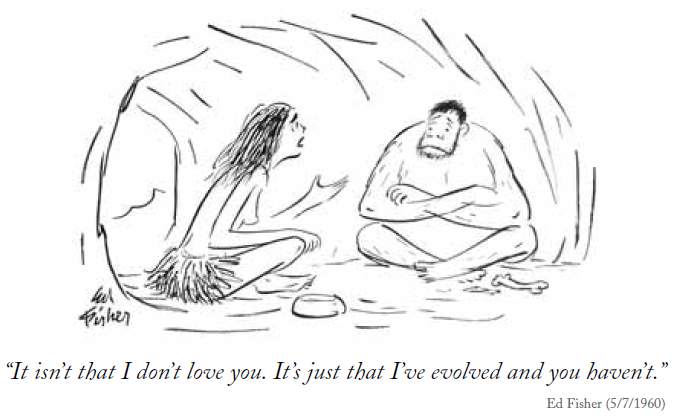Early Humans
At present there are two anthropological theories about the spread of modern man (homo sapiens sapiens).
Broadly they propose:
|
This latter theory has been largely disproven by DNA analysis; discussed below. But there is now good and growing DNA based evidence that we modern humans bred with the earlier wave of hominins; when they were encountered in our spread across the globe.
The best known of these earlier hominins are the Neanderthals (Homo neanderthalensis) that became extinct just 30 thousand years ago.
A representation of a Neanderthal woman - in the Natural History Museum London
Neanderthal burial goods and cave art reveal that they too were predisposed to some form of metaphysical belief system. This probably varied in its details from region to region. They may also have built shelters using animal hides; suggesting that they could also trap game; and possibly build boats. They had larger brains than modern humans and it has long been suspected that they had language; but was it grammatical?
The sequencing of the Neanderthal genome in 2010 found their DNA in the ancestors of all non-African humans (note alternative spelling):
| Neandertals, the closest evolutionary relatives of present-day humans, lived in large parts of Europe and western Asia before disappearing 30 thousand years ago. We present a draft sequence of the Neandertal genome composed of more than 4 billion nucleotides from three individuals. Comparisons of the Neandertal genome to the genomes of five present-day humans from different parts of the world identify a number of genomic regions that may have been affected by positive selection in ancestral modern humans, including genes involved in metabolism and in cognitive and skeletal development. We show that Neandertals shared more genetic variants with present-day humans in Eurasia than with present-day humans in sub-Saharan Africa, suggesting that gene flow from Neandertals into the ancestors of non-Africans occurred before the divergence of Eurasian groups from each other. A Draft Sequence of the Neandertal Genome - 56 authors in Science 7 May 2010 |
This was probably due to a Neanderthal male, or a part Neanderthal male, mating with our common ancestral mother; as there is no Neanderthal component in human mtDNA (that only follows the female line - see below).

The presence of shared Neanderthal DNA in all non-Africans lends support to the theory that our common ancestor left Africa between 64 to 75 thousand years ago when climatic conditions were favourable; probably first populating the modern Middle East and Mesopotamia.
In addition to Neanderthal, several other ancient hominins are thought to have left Africa in the past two million years; during the Pleistocene.
A related archaic Neanderthal-like population known as the Denisovans has been identified from DNA recovered from a finger bone found in a Siberian cave; dated to between 30 and 50 thousand years ago.
The discovery of Denisovan DNA in Asian populations, in addition to Neanderthal inheritance, suggests that the Denisovan's range once extended to Southeast Asia and perhaps Oceania.
In addition to ancient Neanderthal and Denisovan populations, the remains of another advanced fire using and tool making hominin (Homo erectus soloensis), with dates between 550 and 143 thousand years ago, has been found around the Solo river in Java.
A possible relative: Homo Floresiensis has been found on the nearby island of Flores; living from over 95 to 13 thousand years ago.
